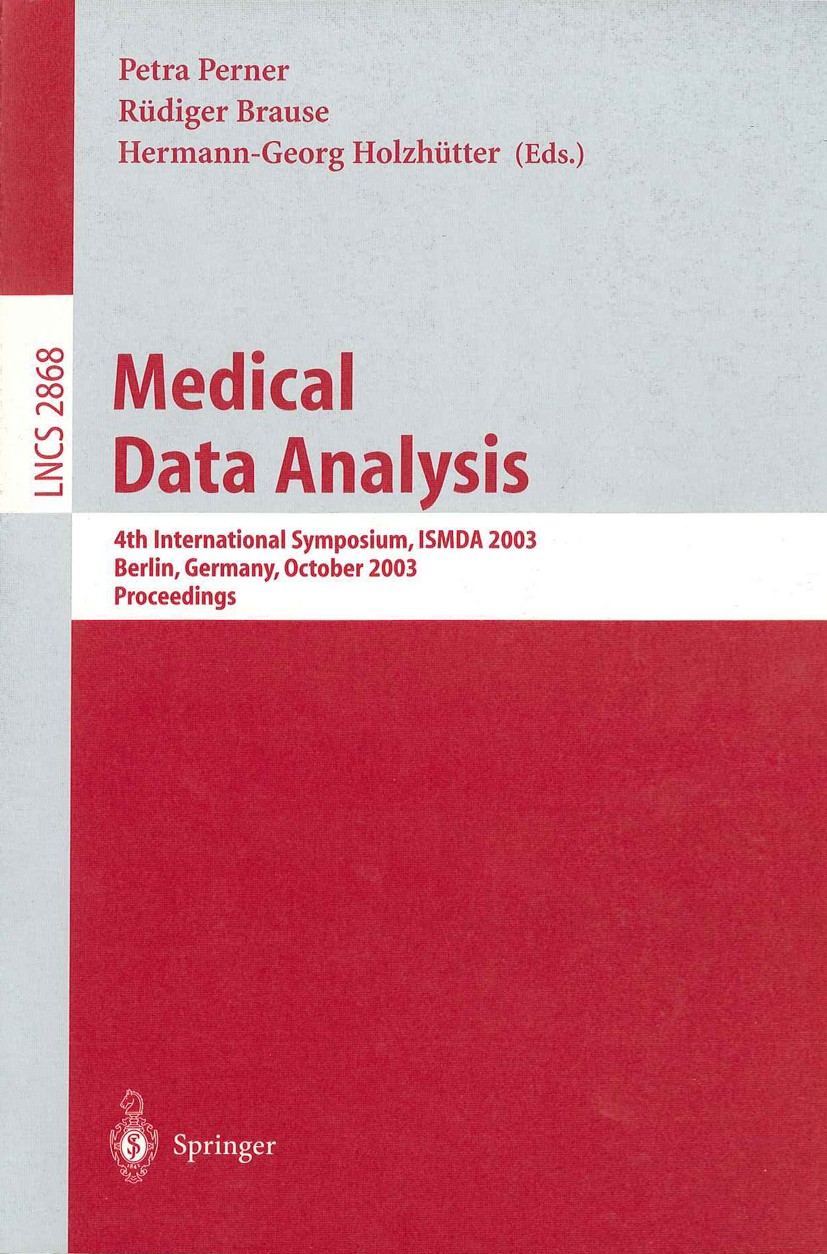| 书目名称 | Medical Data Analysis |
| 副标题 | 4th International Sy |
| 编辑 | Petra Perner,Rüdiger Brause,Hermann-Georg Holzhütt |
| 视频video | http://file.papertrans.cn/630/629139/629139.mp4 |
| 丛书名称 | Lecture Notes in Computer Science |
| 图书封面 |  |
| 描述 | .This book constitutes the refereed proceedings of the 4th International Symposium on Medical Data Analysis, ISMDA 2003, held in Berlin, Germany in October 2003...The 15 revised full papers presented were carefully reviewed and selected for inclusion in the book. The papers are organized in topical sections on medical models and learning, integration of intelligent analysis methods into medical databases, medical signal processing and image analysis, and applications of medical diagnostic support systems.. |
| 出版日期 | Conference proceedings 2003 |
| 关键词 | LA; Monitor; Optische Kohärenztomografie; data analysis; data mining; diagnosis; image analysis; knowledge |
| 版次 | 1 |
| doi | https://doi.org/10.1007/b14289 |
| isbn_softcover | 978-3-540-20282-0 |
| isbn_ebook | 978-3-540-39619-2Series ISSN 0302-9743 Series E-ISSN 1611-3349 |
| issn_series | 0302-9743 |
| copyright | Springer-Verlag Berlin Heidelberg 2003 |
 |Archiver|手机版|小黑屋|
派博传思国际
( 京公网安备110108008328)
GMT+8, 2025-11-17 00:51
|Archiver|手机版|小黑屋|
派博传思国际
( 京公网安备110108008328)
GMT+8, 2025-11-17 00:51


